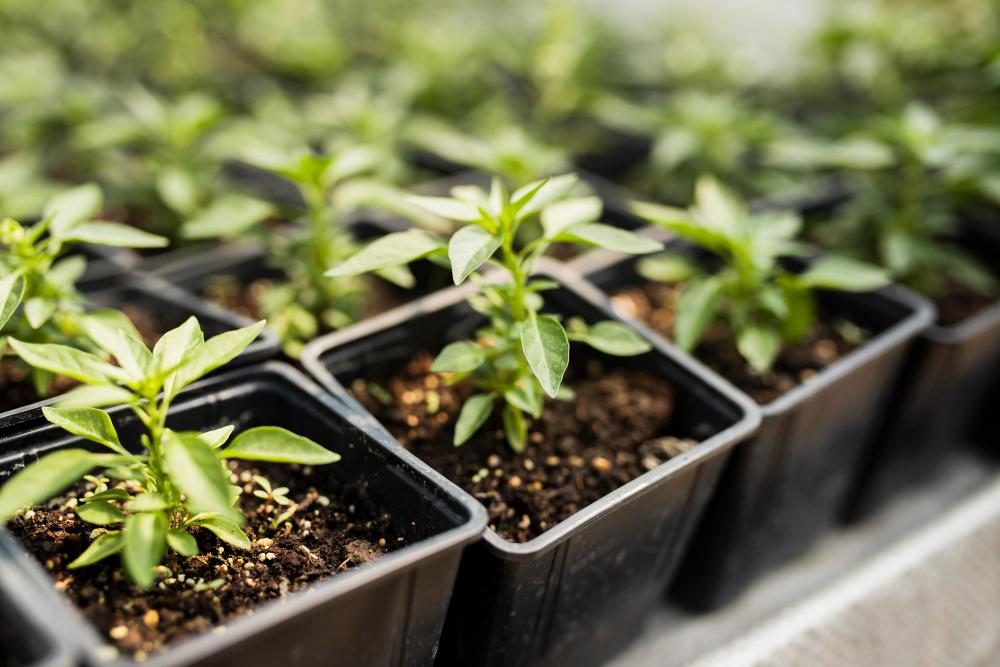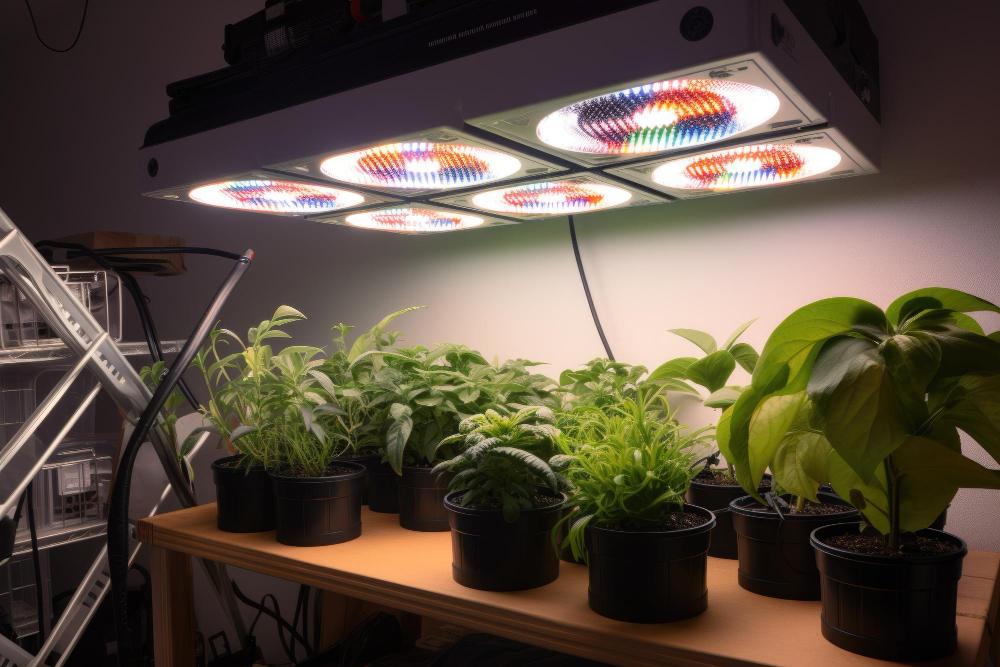Introduction
Are you new to using grow kits or looking to improve your success rate? Many growers make common mistakes that can hinder plant growth and reduce their yield. In this section, we’ll explore the most prevalent errors made when using grow kits and provide tips to help you avoid them.
Additionally, we’ll showcase the best, affordable, and top-rated grow kits available on the market. By the end of this section, you’ll be equipped with the knowledge to maximise your success and enjoy bountiful harvests.
Not Following Instructions
Using a grow kit can be an easy and convenient way to grow your plants, but it’s essential to follow the instructions carefully. Whether you’re using a beginner or advanced grow kit, the manufacturer’s instructions will provide you with the specific guidelines for your kit’s optimal success.
If you’re a beginner, start with a kit that’s designed for beginners and follow the instructions step by step. These kits are designed to be simple and easy to use, so make sure you follow everything to the letter, from setting up the kit, to planting your seeds, to monitoring and adjusting the environment.
Advanced grow kits require more attention to detail and may have specific requirements regarding light, humidity, temperature, and nutrients. If you’re an experienced grower, make sure you carefully read and understand the instructions before starting. Don’t assume that you know what to do just because you’ve used a similar kit before.
Overwatering Grow Kits
One of the most common mistakes that growers make when using grow kits is overwatering their plants. Overwatering can lead to root rot, nutrient deficiencies, and stunted growth.
Whether you’re using indoor or outdoor grow kits, it’s important to follow the instructions and only water your plants when necessary. Avoid the temptation to water every day, as this can drown your plants and cause them to wither.
Before watering your plants, check the soil’s moisture level by sticking your finger into the soil up to your first knuckle. If the soil feels dry, it’s time to water. If it’s still moist, wait a bit longer before watering again.
Remember, every plant has different watering needs, so it’s crucial to pay attention to your specific plant’s requirements. Overwatering can be just as detrimental to your plants as underwatering, so strike a balance and only water when necessary.
Underwatering Grow Kits
While overwatering can be a problem, underwatering can be just as detrimental to your plants. Even with complete grow kits, it’s essential to pay attention to your plants’ water needs and ensure they’re getting enough water.
One of the most common mistakes growers make is not watering their plants enough. Without enough water, your plants can become dehydrated and stunted, resulting in poor growth and yield.
Make sure to follow the instructions that come with your grow kit and water your plants regularly. The exact frequency of watering will depend on several factors, including the plant type, growth stage, and environmental conditions.
Not Enough Light
Plants need sufficient light to grow properly, and if you’re using indoor grow kits, it’s essential to ensure that your plants are getting enough light. The best way to achieve this is to locate your grow kit in a spot where it can receive adequate natural light.
If natural light is not an option, consider using artificial lighting to supplement the light your plants receive. LED grow lights are a popular choice, as they provide the full spectrum of light that plants need for growth and can be adjusted as necessary to ensure your plants receive the optimal amount of light.
Too Much Light
While proper lighting is crucial for plant growth, giving your plants too much light can be just as detrimental as not giving them enough. This is especially true when using affordable or beginner grow kits with artificial lighting. To avoid damaging your plants and hindering their growth, it’s essential to follow instructions carefully and not leave your lights on for too long.
Using Old or Poor Quality Soil
The quality of the soil in your grow kit can make a significant difference in the success of your plants. Using old or poor quality soil can lead to nutrient deficiencies and hinder growth. It is essential to ensure that you are using high-quality soil that is rich in nutrients.
| Tip: | With complete grow kits, you can be sure that you’re using high-quality soil that’s rich in nutrients. These kits are designed to provide the optimal growing conditions for your plants, including the right soil, nutrients, and pH level. |
|---|
If you are not using a complete grow kit, make sure to choose a high-quality soil that is appropriate for your plant type and growth stage. It’s essential to choose a soil that provides the right balance of nutrients, moisture retention, and drainage.
Remember that the soil in your grow kit will need to be replaced periodically, as the nutrients will be used up over time. When it’s time to replace the soil, make sure to use a high-quality potting mix to ensure that your plants continue to thrive.
Not Controlling Temperature and Humidity
Temperature and humidity control is crucial for the success of your grow kit, particularly if you’re using outdoor or advanced grow kits. Extreme temperatures and humidity levels can cause severe damage to your plants and hinder growth. Therefore, it’s essential to monitor the temperature and humidity levels in your grow area and adjust them accordingly.
If you’re using an outdoor grow kit, make sure to keep it in an area that’s sheltered from harsh weather conditions, such as strong winds, heavy rainfall, or extreme temperatures. If you’re using an advanced grow kit, you may want to invest in a thermostat or a humidifier to help regulate the temperature and humidity levels in your growing area.
It’s also crucial to ensure that your grow kit is adequately ventilated to avoid excessive heat or trapped humidity. A small fan can help circulate air and keep your plants cool, preventing the build-up of harmful pathogens and bacteria.
By monitoring and controlling the temperature and humidity levels in your grow area, you can ensure that your plants are growing in a suitable environment and have the best possible chance of success.
Using the Wrong Fertiliser
Fertilisers provide essential nutrients to your plants, and using the wrong one can have a detrimental effect on their growth. When selecting a fertiliser, it’s important to choose one that’s appropriate for your plant type and growth stage.
For example, if you’re growing vegetables, you’ll want to choose a fertiliser that’s high in nitrogen to encourage leafy growth. If you’re growing flowering plants, you’ll need a fertiliser that’s high in phosphorus to promote blooming.
When using top-rated grow kits, make sure to follow the instructions and use the recommended fertiliser. These kits often come with specifically formulated fertilisers that are perfect for the plants you’re growing.
Not Pruning Your Plants
Pruning is a vital part of growing healthy plants. When using advanced grow kits, it becomes even more important to prune your plants regularly. Pruning helps your plants to grow bushier and healthier, leading to better yields. Below are some tips on how to prune your plants correctly:
- Start pruning when your plants are young. This will help them grow into the desired shape.
- Use clean, sharp scissors or pruning shears to avoid damaging your plants.
- Remove any dead or yellowing leaves regularly.
- Trim the top of your plant to encourage bushier growth and more lateral branches.
- Consider using plant training techniques like topping or LST (low-stress training) to maximise your yield.
Remember, pruning can be stressful for your plants, so make sure not to overdo it. Always follow the instructions and use your judgement to determine how much pruning your plants need.
Harvesting Too Late or Too Early
Harvesting your plants at the right time is crucial for obtaining the best results. However, many beginners make the mistake of harvesting their plants too early or too late. This can lead to a suboptimal yield and quality.
So, how do you know when to harvest your plants? The answer depends on the type of plant you’re growing and the growth stage. Generally, you should harvest when the flowers or fruits begin to mature and reach their peak potency and flavour.
If you’re growing cannabis, it’s essential to monitor the trichomes, which are the resin glands that contain the plant’s active compounds. When the trichomes are cloudy or milky, it’s time to harvest. Waiting too long can lead to a decrease in potency and flavour, while harvesting too early can result in a less effective product.
It’s always a good idea to consult the instructions that come with your grow kit or do some research on the specific plant you’re growing to determine the best time to harvest.
FAQs
Here we have compiled a list of frequently asked questions about grow kits:
1. How long does it take for plants to grow in a grow kit?
The time it takes for plants to grow in a grow kit varies depending on the type of plant, the type of grow kit, and the growing conditions. Some plants can take as little as a few weeks, while others can take several months.
2. Do I need any additional equipment to use a grow kit?
Most grow kits come with everything you need to get started, but you may need additional equipment depending on your specific setup and growing conditions. For example, if you’re using an indoor grow kit, you may need to invest in artificial lighting to supplement natural light.
3. Can I reuse my grow kit?
Some grow kits are designed for single-use, meaning that the nutrients in the soil will only last for one growth cycle. However, there are some reusable grow kits available on the market. Make sure to check the product description before purchasing to see if it’s designed for single or multiple uses.
4. What types of plants can I grow in a grow kit?
Grow kits are designed to accommodate a wide variety of plants, including vegetables, herbs, and flowers. Make sure to check the product description for specific plant recommendations and growing instructions.
5. Can I use grow kits for outdoor gardening?
Yes, there are grow kits designed specifically for outdoor gardening. These kits typically include larger containers and soil designed for outdoor growing conditions. Make sure to check the product description before purchasing to ensure it’s suitable for outdoor use.
6. How often should I water my plants in a grow kit?
The frequency of watering depends on the plant type, the type of grow kit, and the growing conditions. Make sure to follow the instructions that come with your grow kit and monitor your plants regularly to ensure they’re getting the right amount of water.







